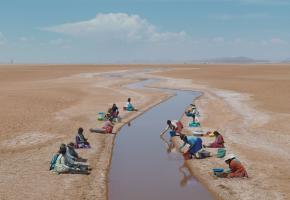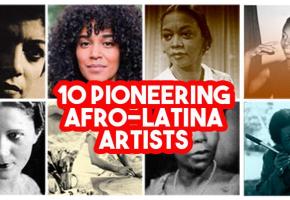Tire Die (Argentina)
Pioneer documentary filmmaker Fernando Birri studied in the Centro Sperimentale di Cinematografia, in Rome, before returning to the Argentine province of Santa Fe to fund a film school. Focused on shanty town kids and the risks they took as they begged passengers from passing trains, Tire Die / Throw Us a Dime (Fernando Birri, 1958) is a short film (33 mins) and also an anthropological work made by the film school students, who decided the final cut together with the members of the local community.
La batalla de Chile - The Battle of Chile (Chile)
One of the most important documentaries ever made in Latin America, La batalla de Chile / The Battle of Chile (Patricio Guzmán, 1975) focuses on the coup d’ état that brought to an end the government of the democratically-elected President, the socialist Salvador Allende, by the right-wing dictator Augusto Pinochet on the 11 September 1973. Finished in exile, the film also reflects on the shattering consequences for both those who left and those who stayed.
Memorias del subdesarrollo - Memories of Underdevelopment (Cuba)
After the revolution, bourgeois and aspiring writer Sergio has decided to stay in Cuba while his friends and family (including his wife) flee to Miami. He daily surveys Havana and observes the changes occurring and also has a couple of love affairs that get him into big trouble. Memories del subdesarrollo / Memories of Underdevelopment (Tomás Gutiérrez Alea, 1968) progressively brings into question the audiences’ identification with the protagonist.
La Hora de los Hornos (Argentina)
Filmed by Octavio Getino y Fernando Solanas and the Grupo Cine Liberación between 1966 and 1968, and released in clandestinely in 1968, La hora de los hornos / The Hour of the Furnaces is a 4-hour-long film divided into three parts. With an innovative style and a rather Manichean ideology, the filmmakers attempt to put film at the service of the revolutionary cause by denouncing ‘neo-colonialism’ and offering a new type of filmmaking for social change.
Yawar Malku (Bolivia)
Renown Bolivian film director Jorge Sanjinés portrays an indigenous (Quechua-speaking) community and their reaction when they learn the U.S. Peace Corps, the American agency that is meant to give them medial care, are secretly sterilising women. Yawar Malku / Blood of the Condor (1969) is a fundamental piece of filmmaking as it not only denounces cultural imperialism but essentially an actual attempt to eliminate a race believed ‘inferior’.
Deus e o diabo na terra do sol (Brazil)
Deus e o diabo na terra do sol / Black God, White Devil (1964) is an extremely powerful film, example of the Cinema Novo movement that brought to focus the social and political problems of Brazil in the 1960s. Here Glauber Rocha tells the story of Manuel, who flees the sertão (semi-arid region in the north-east of the country) with his wife after killing his boss, who had tried to cheat him.
Now! (Cuba)
Now! (Santiago Alvarez, 1965) is a superbly beautiful and moving six-minute film. Through a combination of newsreel and still images, over a song by Lena Horne that was banned in America (called ‘Now’) it poses harsh criticism on politics’ unwillingness to tackle racism.
Araya (Venezuela)
One of the earliest independent films to bring to the screen the lives and stories of the poor and the forgotten of the continent, this is an unusual documentary, made in a country without the strong filmmaking tradition of its neighbours, and made by a woman. Director Margot Benacerraf Araya (1958) co-wrote the film with the French poet Pierre Seghers. The focus is on the life of the ‘salineros’, the workers who extracted manually the salt from mine in the northern peninsula of Araya. Nominated to Cannes in 1959, Araya share the prize of the critics with Resnais’ Hiroshima, Mon Amour.
Cabra marcado para morrer: Vinte anos depois (Brazil)
In this film of the Eduardo Coutinho returns to a documentary project he had left unfinished twenty years earlier because of the military coup of 1964, which focused on the assassination of peasant leader João Pedro Teixeira in 1962. As result of the distance from the original events and of Coutinho’s own reflections Cabra marcado para morrer: Vinte anos depois / Man Marked to Die: Twenty Years Later (1984) has now a broader focus on the memoris and life of the local community and in particular of Isabel Texeira, João Pedro’s wife.
México, la revolución congelada (Argentina)
Argentine director Raymundo Gleyzer, leader of the Grupo Cine de la Base who disappeared in 1976 in the hands of the military dictatorship presents a very critical analysis of the trajectory of the Mexican revolution, focusing on the socio-political context and ending in the massacre of Tlatelolco Square in 1968. México, la revolución congelada / Mexico: The Frozen Revolution (1971) interviews the most diverse (many of them ‘voiceless’) peoples of Mexico, from the north to the southern state of Chiapas.

















